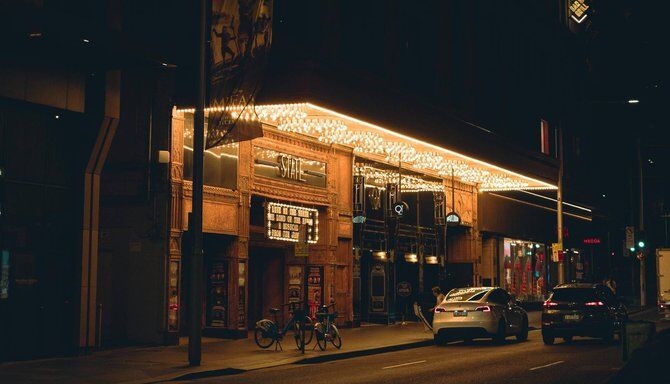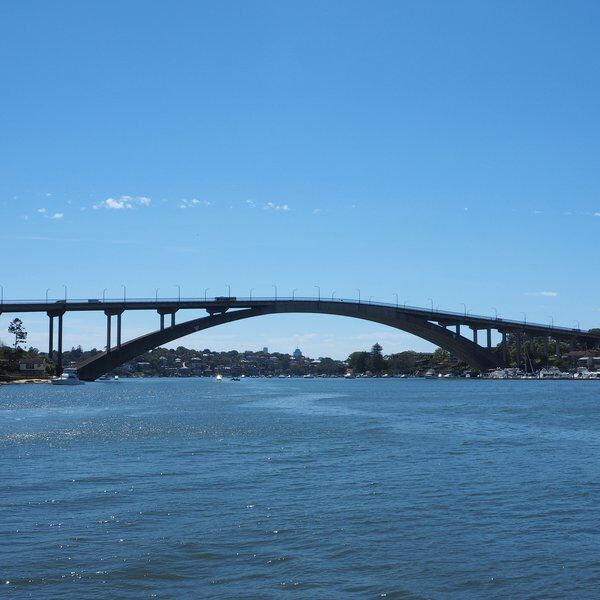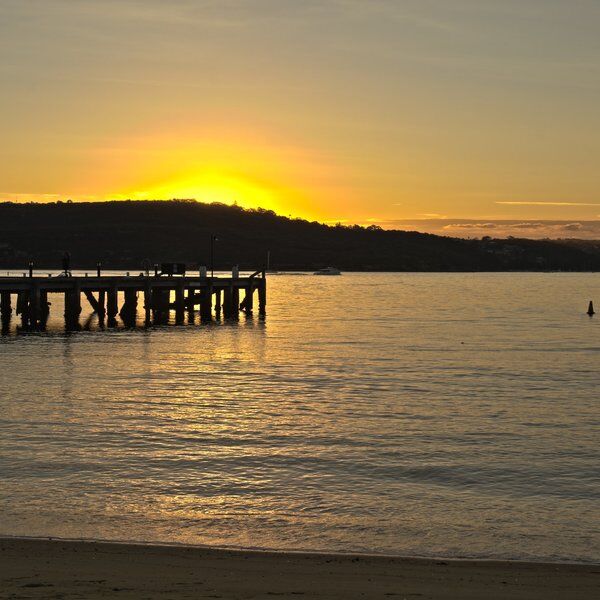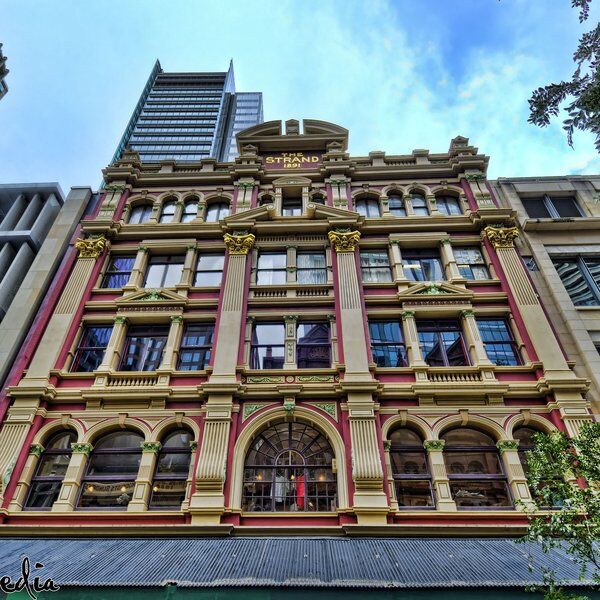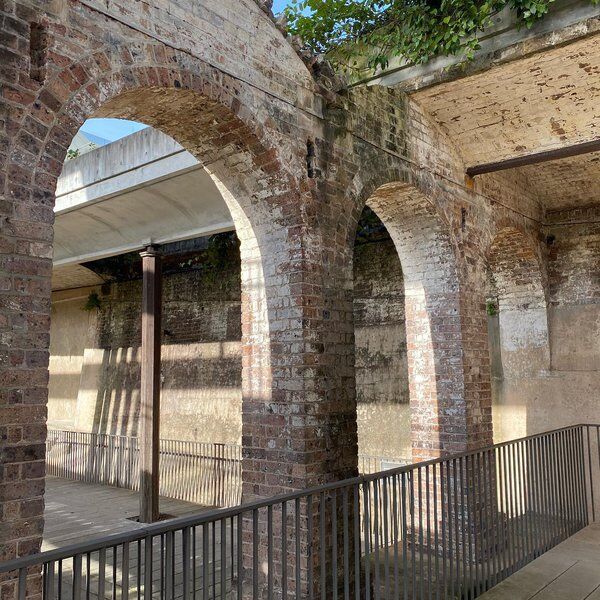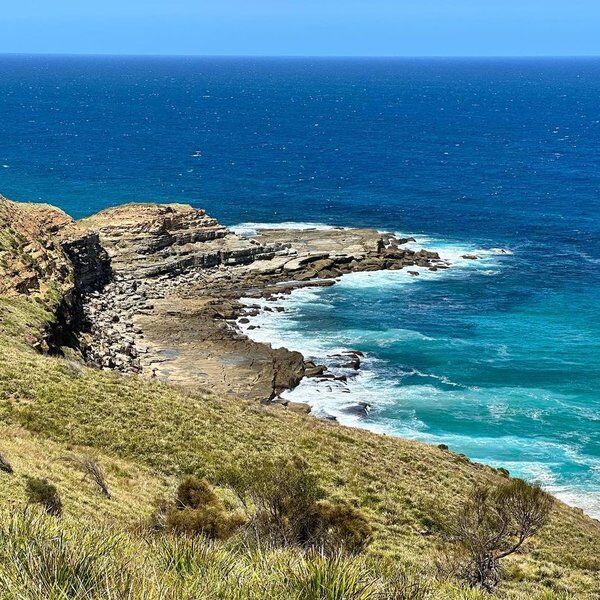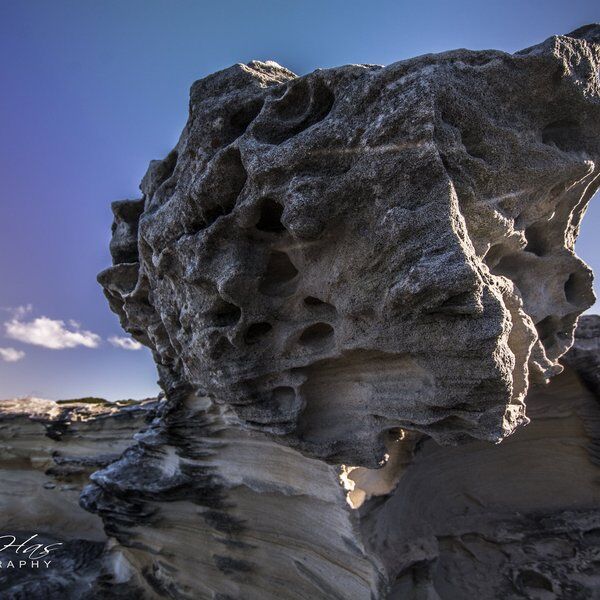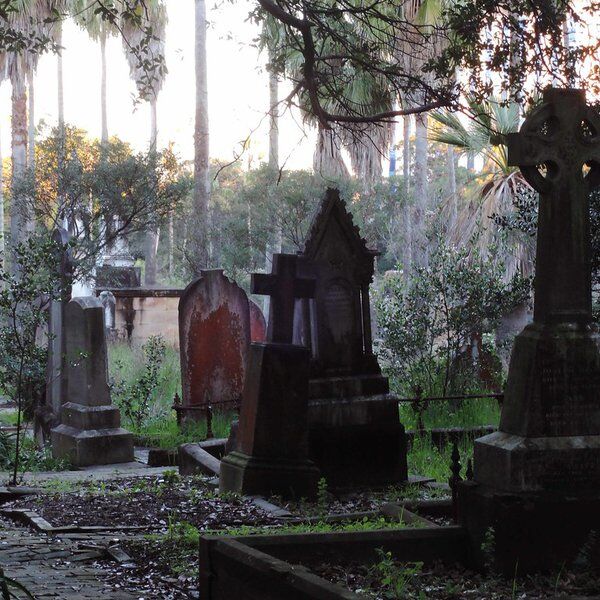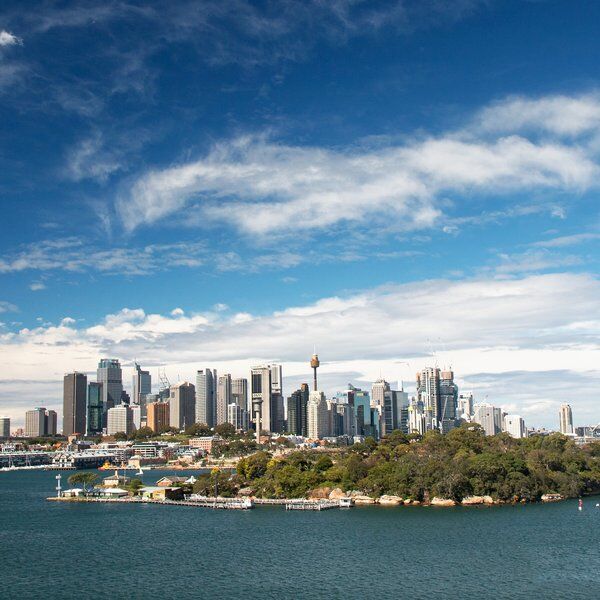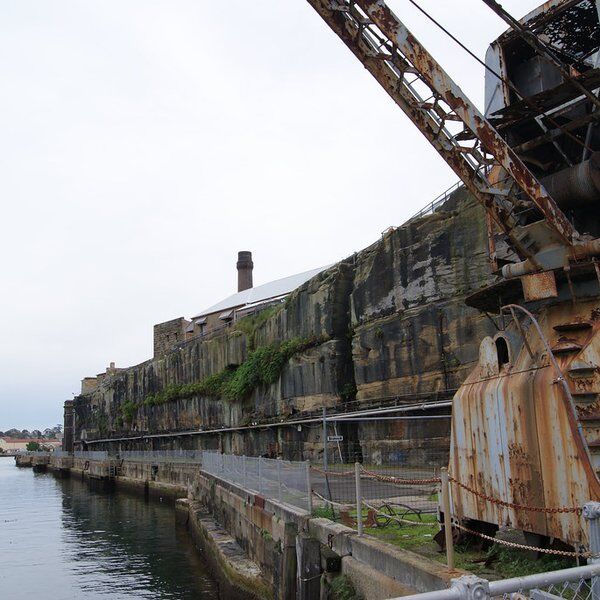Even standing outside of it on Market Street, you just can’t fail to see the sheer opulence of Sydney’s State Theatre.
It's gold, bold, unapologetic and an underrated addition to Sydney’s long list of hidden gems and perhaps most importantly, it tells us a lot about the New South Wales capital of almost 100 years ago.
Opened in 1929 and once described as the “Palace of Dreams,” the State Theatre blends Spanish Gothic, Italian Baroque, and Art Deco influences into a breathtaking display of craftsmanship and imagination. Or, as British comedian Rob Beckett referred to it at a stand-up performance in October 2025: “The Titanic meets Roman orgy”.
But beyond its ornate chandeliers and hand-painted ceilings, the State Theatre tells a story of Sydney’s cultural evolution, from the golden age of cinema to its modern life as a celebrated stage for film festivals, concerts, and live performances.
Its walls have witnessed nearly a century of artistic triumphs and historical change, earning it a place on the New South Wales State Heritage Register and in the hearts of generations of Australians.
Step inside with us as we take a closer look at the Sydney State Theatre’s history, its secrets and why it’s well-worth a visit…
State Theatre Sydney’s Early History (The 1920s-1930s)
You’d never be able to tell today, but when the State Theatre opened its doors on 7 June 1929, it did so after quite a few hiccups.
An article in the Rockhampton Evening News, dated 23 April 1929, tells us that Sydney’s State Theatre was due to open in May 1929 after the opening had already been postponed once. Originally, the plan had been to open during Easter, but “several factors” had caused delays. What were they? Well, according to the article, they were still waiting for the “latest “talkie” installations, and a fire that had destroyed all the electric fittings. Not an ideal start, but as they say in showbiz, the show must go on…
The “talkie” installations were vital, because the State Theatre was built primarily as a cinema or movie theatre, rather than for stage productions.
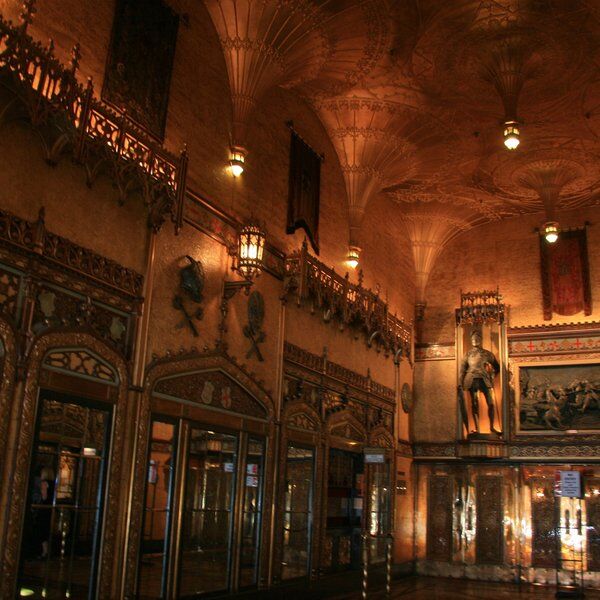
In the 1920s, movies were the latest, hottest and most anticipated forms of entertainment that had spread from the United States all over the world, including to Australia. A new era of prosperity and cultural confidence following World War I had ushered in a new era, and nowhere was this more evident than in the realm of entertainment.
Designed by the visionary, New Zealand-born architect Henry Eli White, the State Theatre was conceived as a “palace for the people”, a place where ordinary Australians could experience the splendour and escapism of cinema in surroundings fit for royalty.
White’s design was nothing short of revolutionary. Heavily inspired by a Chicago theatre of the same name, Sydney’s State Theatre was designed to blend Art Deco modernism and Spanish Gothic romanticism. And yes, as we said in the introduction, it was Australia’s first theatre to have air conditioning as we know it.
And the building wasn’t just an ode to the art of cinematography. Another article in the Sun-News Pictorial tells us that a total of £1000 was offered to artists who could create “the best Australian paintings” to decorate the gallery of the State Theatre in Sydney. The contest was open to all Australians who could “submit up to six entries” each.
An Architectural Marvel: Inside the State Theatre Sydney
Like we said at the start, stepping into the State Theatre is a bit like entering another world, one where everything is gilded, glorious and glamorous.
Where do we even begin to describe the many, many fascinating things about this place? Well, we could start with the entrance, I suppose.
As soon as you’ve walked through the doors (and you’ve had your ticket checked), look up. Visitors are welcomed to the Sydney State Theatre by none other than a statue of King Arthur and an engraved plaque of Saint George slaying a dragon.
Look up even higher, and you’ll see the Gothic fan “pendant vaulting” of the entrance hall, which was actually modelled after the Henry VII Chapel in Westminster Abbey, in London.
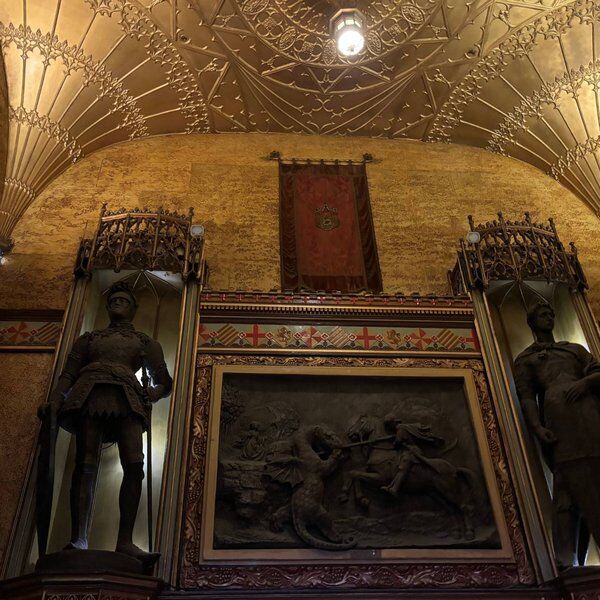
Beyond the theatre’s main foyer, which is lined with (fake but fabulous) Italian marble, you’ll see an incredible ornate dome and an incredible sweeping staircase.
But the real showstoppers are probably to be found in the auditorium. This is where you see the really fancy details, including the grand chandelier, which is still one of the largest in the southern hemisphere.
What you probably don’t know is that, according to one newspaper article, the chandelier was actually the “largest electrolier” in the world at the time. Apparently, it was purchased for £3000 in Czechia, 25 feet in height, 16 feet in diameter and contained 300 lights. Even its design was based on opulence: it is an exact replica of (but 4 times larger than) the chandeliers that hang in the Imperial Palace at Hofburg in Vienna.
Even without the chandelier, the ceiling itself is an impressive showcase of craftsmanship. The trellised, plaster ceiling is decorated with gold leaf and elaborate carvings. It looks almost like a honeycomb, and if you look really closely, you’ll see that even the inside of each octagon has been handpainted.
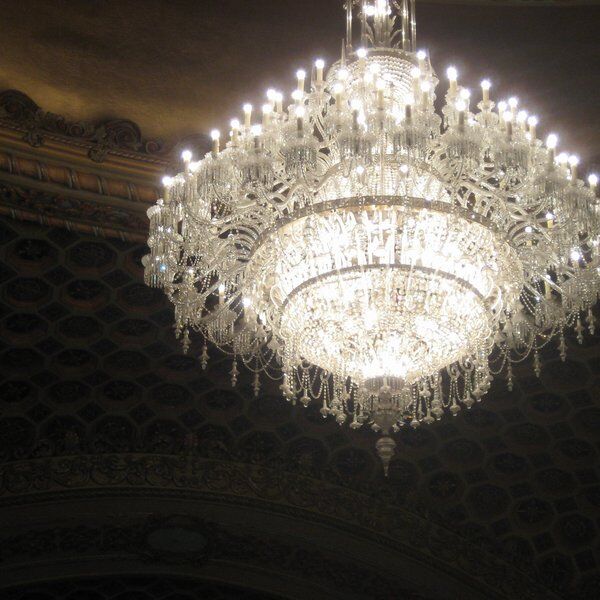
A Cinematic Golden Age: The State Theatre’s Movie Legacy
Did you know that the first movie to premier at the State Theatre in Sydney was called “The Patriot”?
Like we said, the State Theatre was designed to be Sydney’s fanciest movie theatre, and it was certainly a glittering showcase for the golden age of cinema.
Operated by Hoyts Theatres and serving as the flagship venue for Paramount Pictures, the theatre became synonymous with glamour, escapism, and the thrill of the silver screen.
Although the names of the actors and actresses who featured in the premier movie are unknown to us, Sydneysiders of 1929 would have been awed to know they could watch a “Talking Picture” (movie) starring Emil Jannings, Florence Vidor, Lewis Stone and Neil Hamilton.
In those days, going to the movies was a top-notch social event where everyone donned their finest attire and gathered beneath chandeliers to marvel at Hollywood’s latest productions.
For a long time, The State Theatre’s film program reflected the grandeur of its design. It hosted plenty of lavish film premieres, complete with orchestral overtures and live stage prologues before the main feature, which was common in pre-television years.
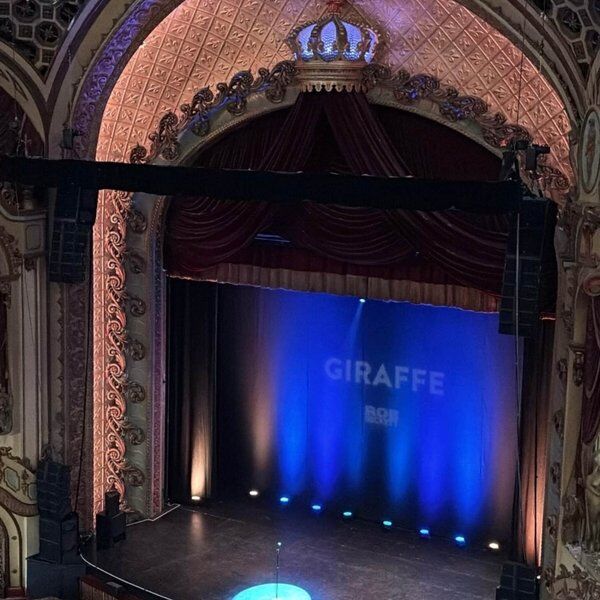
Survival and Restoration of The Sydney State Theatre: From Decline to Heritage Listing
Glorious as the Golden Age of cinema was, all good things must come to an end, or adapt. Luckily, in the State Theatre’s case, they chose the latter.
By the mid-20th century, the grandeur of cinema was fading, television had arrived, and with it came a seismic shift in entertainment culture. As audiences dwindled and the once-thriving picture palaces struggled to stay relevant, many of Sydney’s grand theatres were demolished or repurposed. The State Theatre, too, seemed destined for the same fate.
But it was saved from the fate of its many counterparts. Despite soaring maintenance costs, Sydney’s cultural community recognised an irreplaceable architectural and artistic treasure. A passionate preservation campaign, led by heritage advocates, artists, and the general public, emerged to save the theatre from demolition.
Their efforts succeeded. In 1978, the National Trust of Australia (NSW) classified the building for its architectural and historical importance, acknowledging it as one of the most significant examples of Art Deco and Baroque revival architecture in the country. This recognition culminated in the theatre’s inclusion on the New South Wales State Heritage Register.
Following its heritage listing, careful restoration and conservation projects ensured that the theatre’s chandeliers, murals, and decorative plasterwork were returned to their original splendour.
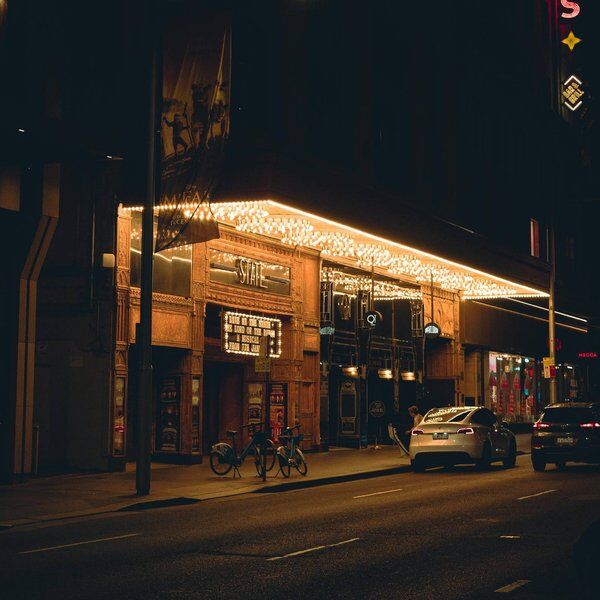
Visiting The State Theatre Sydney Today
Although nearly a century has passed since its debut, the State Theatre in Sydney continues to shine as one of Australia’s most beloved performance venues.
While its early decades were defined by the magic of cinema, the theatre has since evolved into a thriving stage for live performances, concerts and festivals, in particular the Sydney Film Festival which attracts filmmakers, celebrities, and audiences from around the world.
I don’t know about you, but it makes me happy that the same stage that once hosted silent films and vaudeville acts now welcomes international artists, contemporary musicians, and touring stage shows. Personally, I’ve been to this theatre heaps of times mostly to see comedy shows, and it always delivers.
How to Visit State Theatre Sydney:
- Location: 49 Market Street, Sydney NSW, directly opposite the Queen Victoria Building and a short walk from Pitt Street Mall.
- By Train: Alight at Town Hall Station, then take a 5-minute walk east along Market Street.
- By Light Rail: The QVB stop on the L2 and L3 lines is less than 2 minutes away.
- By Bus: Numerous routes stop nearby along George and York Streets.
- By Car: Parking is available at nearby Wilson and QVB car parks (paid).
- Accessibility: The theatre has wheelchair access, lift facilities, and accessible seating.
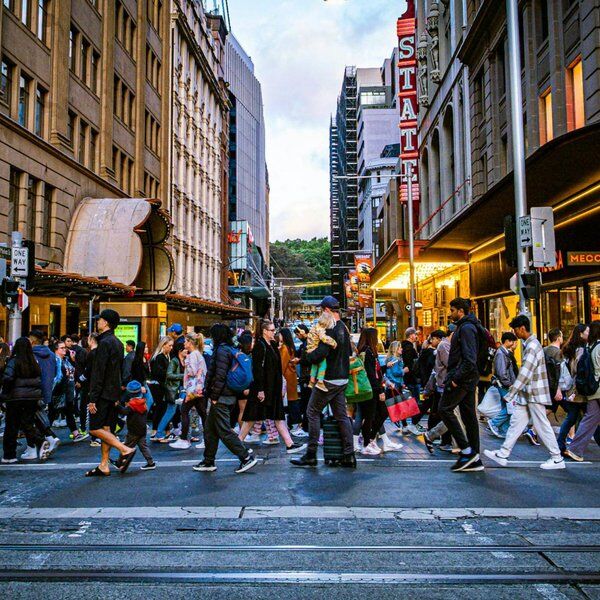
Find More Things to Do in Sydney with CityDays
Remember that no matter what you decide to do on your morning, arvo or evening out, there’s nothing like teamwork to make the dream work.

That’s why we at CityDays create fun, interesting and challenging trails around the world to help you immerse yourself in a city’s culture, history and curios.
Want to find out more?
Check out all our available activities in Sydney here and embark on an adventure in the city you’ll never forget: CityDays awaits!
